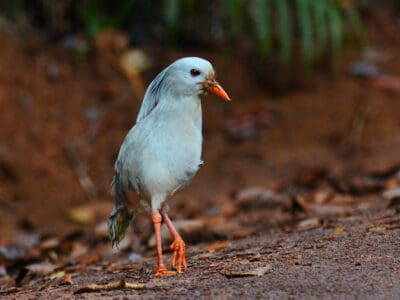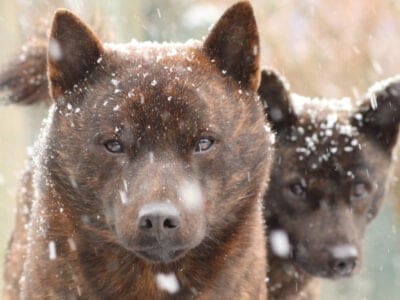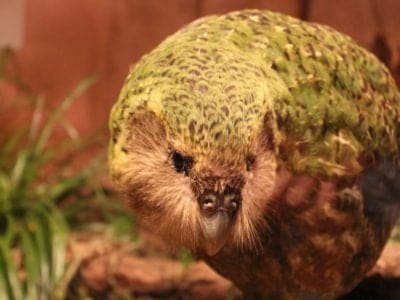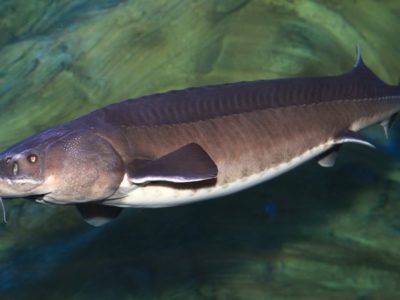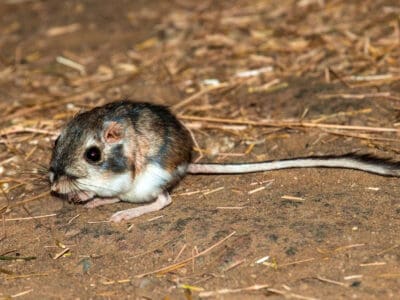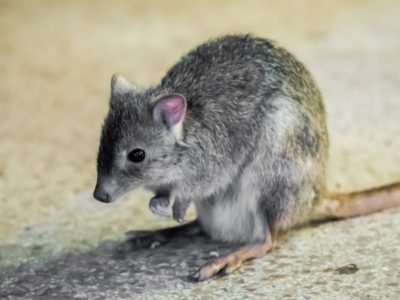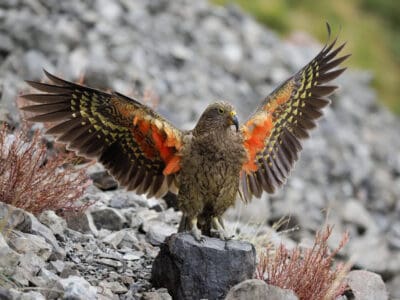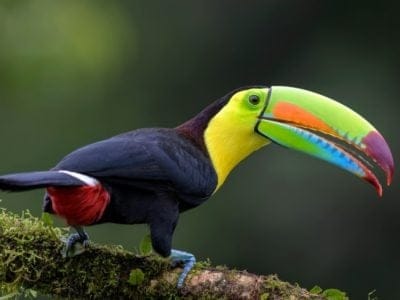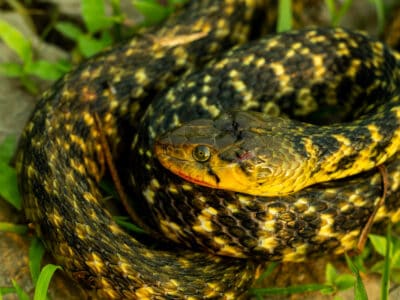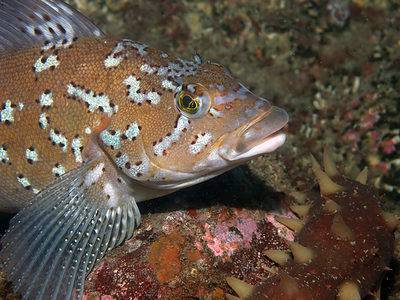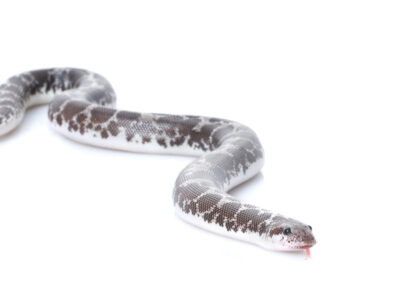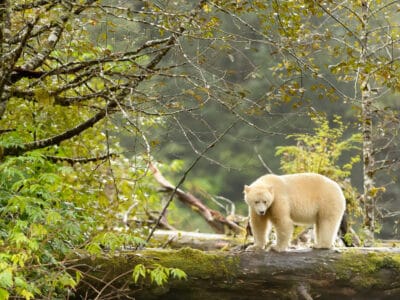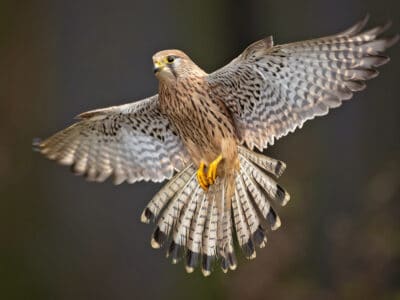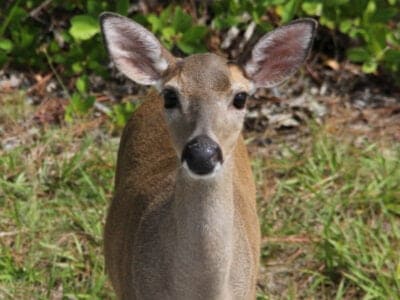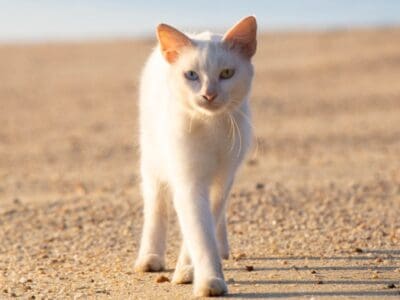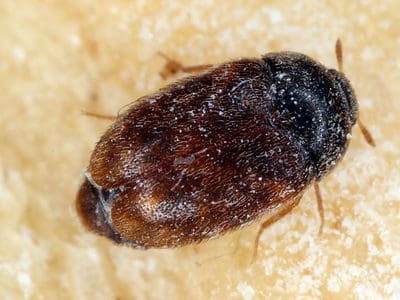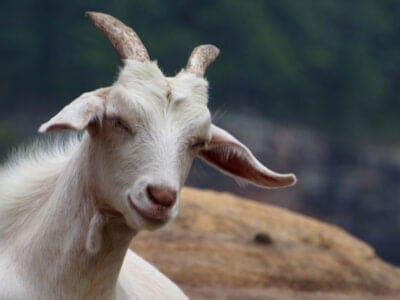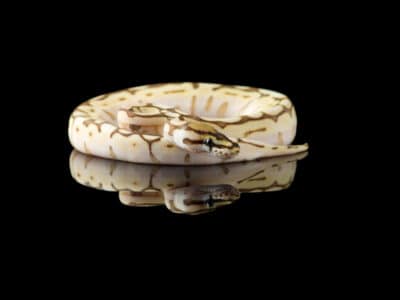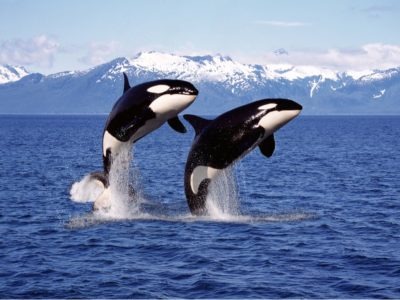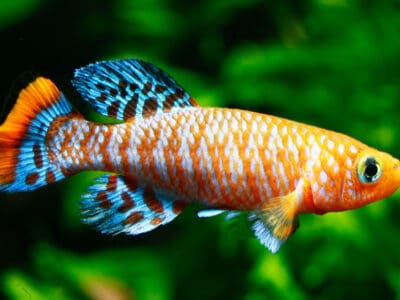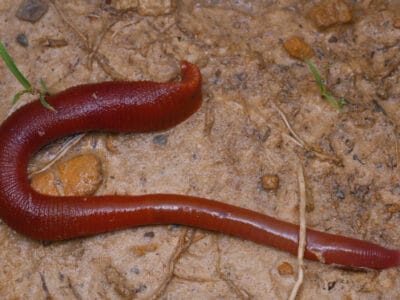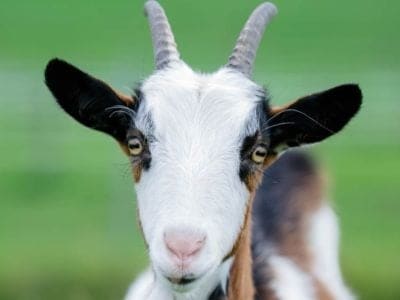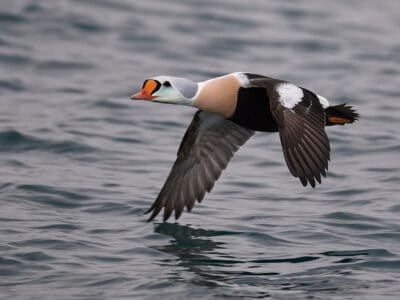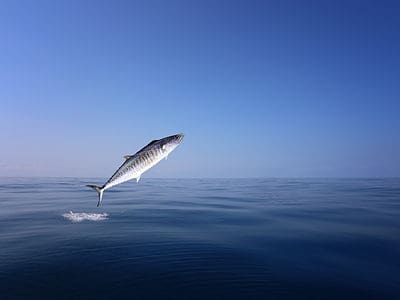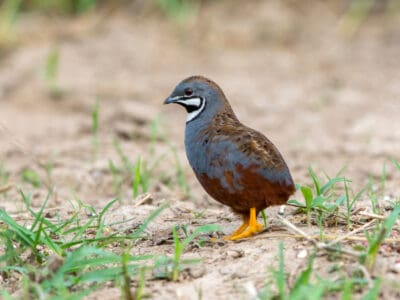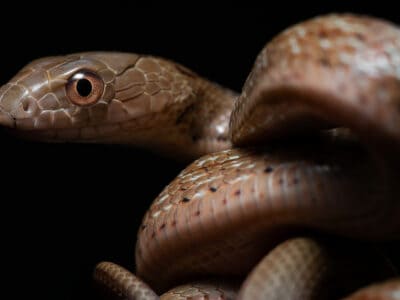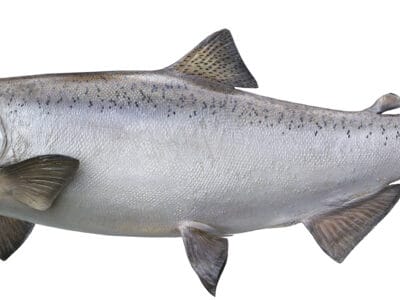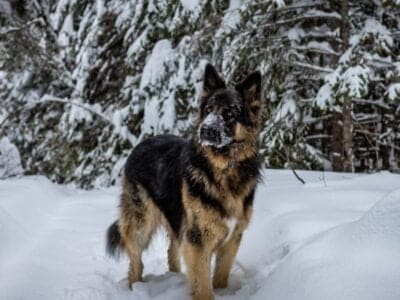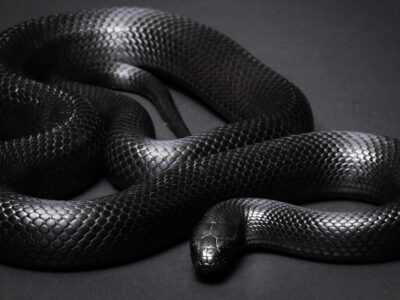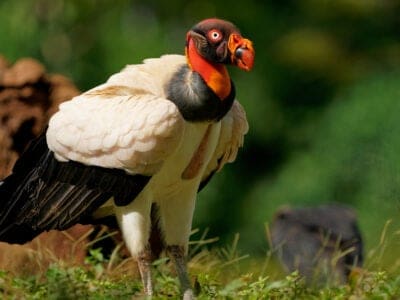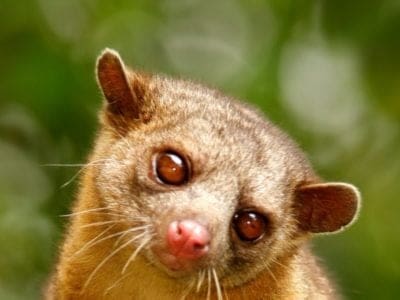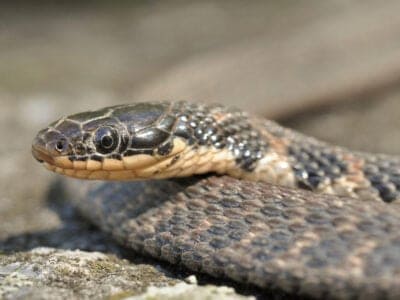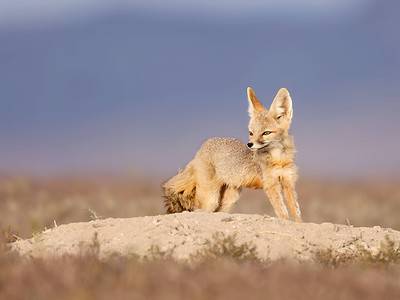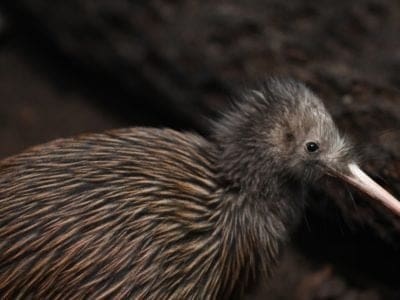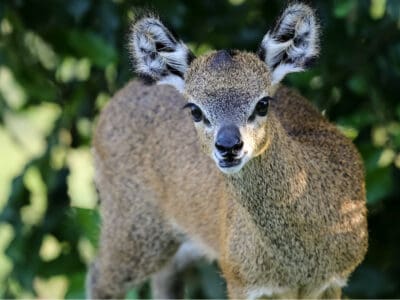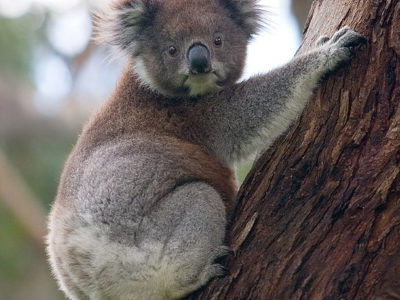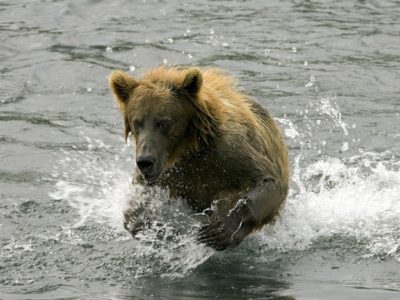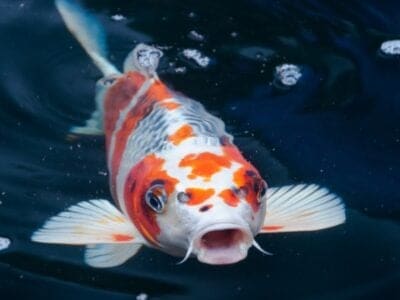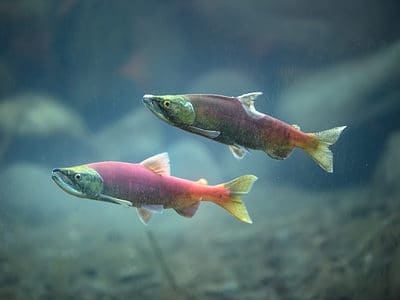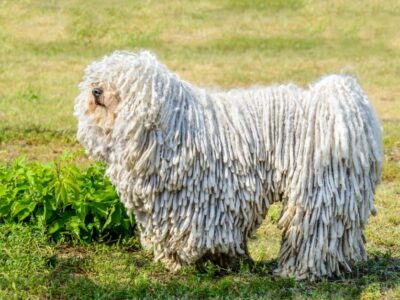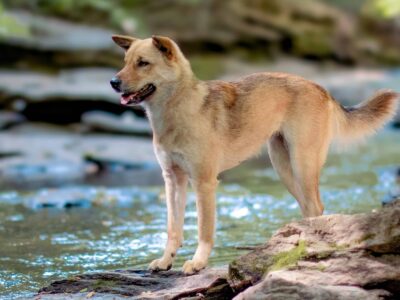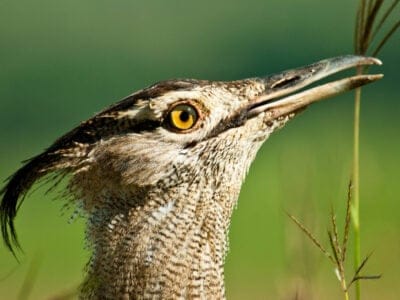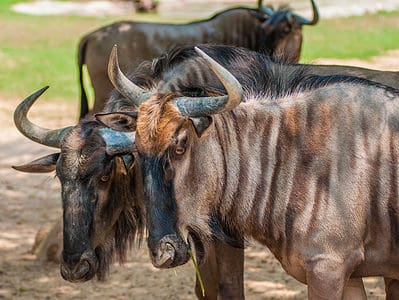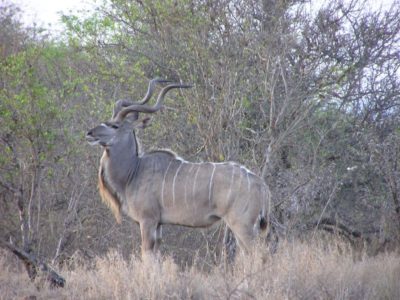Read below for information on 77 different animals that start with the letter K, from kakapos to kudu. The most popular animal that starts with the letter k is the koala, an animal with fingerprints indistinguishable from humans. The least popular K animal is the keel billed toucan. Some fun facts about letter K name animals are:
- Kiwis are a flightless bird only found in the forests of New Zealand
- With their powerful hind legs kangaroos can jump up to 6 feet high and as far as 25 feet forward.
- Komodo dragons are the largest lizard in the world and only found on 5 Indonesian islands.
Jump to any letter
Alphabetical List of Animals That Start with K
- Kagu
- Kai Ken
- Kakapo
- Kaluga Sturgeon
- Kamehameha Butterfly
- Kangal Shepherd Dog
- Kangaroo
- Kangaroo Mouse
- Kangaroo Rat
- Katydid
- Kaua’i ‘Ō‘ō
- Kea
- Keagle
- Keel-Billed Toucan
- Keelback
- Keeshond
- Kelp Greenling
- Kentucky Warbler
- Kenyan Sand Boa
- Kermode Bear (Spirit Bear)
- Kerry Blue Terrier
- Kestrel
- Keta Salmon
- Key Deer
- Keyhole Cichlid
- Khao Manee
- Khapra Beetle
- Kiang
- Kiko Goat
- Killdeer
- Killer Clown Ball Python
- Killer Whale
- Killifish
- Kinabalu Giant Red Leech
- Kinder Goat
- King Cobra
- King Crab
- King Eider
- King Mackerel
- King Penguin
- King Quail
- King Rat Snake
- King Salmon
- King Shepherd
- King Snake
- King Vulture
- Kingfisher
- Kingklip
- Kinkajou
- Kirtland’s Snake
- Kishu
- Kissing Bugs
- Kissing Gourami
- Kit Fox
- Kitefin Shark
- Kiwi
- Klipspringer
- Knifefish
- Knight Anole
- Koala
- Kodiak Bear
- Kodkod
- Koi Fish
- Kokanee Salmon
- Komodo Dragon
- Komondor
- Kooikerhondje
- Koolie
- Korean Jindo
- Kori Bustard
- Kouprey
- Kowari
- Krait
- Krill
- Kudu
- Kudzu Bug
- Kuvasz
Animals that Start with K
Kagu
- Kingdom
- Animalia
- Phylum
- Chordata
- Class
- Aves
- Order
- Eurypygiformes
- Family
- Rhynochetidae
- Genus
- Rhynochetos
- Scientific Name
- Rhynochetos jubatus
Fun Fact: The endangered kagu is the only bird in the world with nasal corns!
The endangered kagu is the only bird in the world with nasal corns! Kagus are endemic to the main island of New Caledonia. They are the only living species in their family, and one of only two species in the Eurypygiformes order. They are flightless, carnivorous birds that live on the forest floor and forage […] Read More
Kai Ken
- Kingdom
- Animalia
- Phylum
- Chordata
- Class
- Mammalia
- Order
- Carnivora
- Family
- Canidae
- Genus
- Canis
- Scientific Name
- Canis lupus
Fun Fact: Kai Ken are a very rare breed of dog from Japan, though pure breeds are even harder to come by.
Though Kai Ken refers to one breed overall, it could easily be divided into two. While one variation has a stocky body, the other has a foxlike body and face. Kai Ken goes by many names including “Tora Inu” or “Tiger dog,” but either represents the same rare breed from Japan, near Mt. Fuji. Originally […] Read More
Kakapo
- Kingdom
- Animalia
- Phylum
- Chordata
- Class
- Aves
- Order
- Psittaciformes
- Family
- Nestoridae
- Genus
- Strigops
- Scientific Name
- Strigops habroptilus
Fun Fact: The heaviest species of parrot in the world!
Originating on the island of New Zealand, the kakapo is a large flightless bird that has evolved to fill a similar ecological niche as land mammals in the way that it roams the forest floor in search of food at night. Though it was largely free of predators for millions of years, the introduction of […] Read More
Kaluga Sturgeon
- Kingdom
- Animalia
- Phylum
- Chordata
- Class
- Actinopterygii
- Order
- Acipenseriformes
- Family
- Acipenseridae
- Genus
- Huso
- Scientific Name
- Huso dauricus
Fun Fact: One of the world's largest freshwater fish
Summary The Kaluga sturgeon is a large, carnivorous fish found throughout the Amur River basin in Russia and China. One of the most massive species in the sturgeon family, it is highly prized for its roe. As a result, they have been hunted almost to extinction and are listed as a Critically Endangered species by […] Read More
Kamehameha Butterfly
- Kingdom
- Animalia
- Phylum
- Arthropoda
- Class
- Insecta
- Order
- Lepidoptera
- Family
- Nymphalidae
- Genus
- Vanessa
- Scientific Name
- Vanessa tameamea
Fun Fact: State insect of Hawaii
The Kamehameha butterfly (Vanessa tameamea) is the official state insect of Hawaii. Moreover, the Kamehameha butterfly ranks as one of the two butterfly species endemic to the state. It occurs across all four major islands, where it feeds on the sap of koa trees. Due to habitat loss, predation, and lack of host plants, Kamehameha […] Read More
Kangal Shepherd Dog
- Kingdom
- Animalia
- Phylum
- Chordata
- Class
- Mammalia
- Order
- Carnivora
- Family
- Canidae
- Genus
- Canis
- Scientific Name
- Canis lupus
Fun Fact: Can run up to 35 miles per hour (56km).
Their protective personality and speed make this breed perfect for livestock herd protection. The Kangal is the national dog of Turkey, where the fawn-colored and black-masked breed originated in the district of Kangal in the Sivas province. These canines are bred for protective abilities that make them valuable for livestock managers and security forces. In […] Read More
Kangaroo
- Kingdom
- Animalia
- Phylum
- Chordata
- Class
- Mammalia
- Order
- Diprotodontia
- Family
- Macropodidae
Fun Fact: Females have a deep pouch on their front!
The kangaroo is among the most remarkable leapers of the animal kingdom. They are also bipedal, meaning they walk on two legs. When it’s in motion, the kangaroo hops completely clear off the ground, covering up to 30 feet in a single swift motion. No other large animal of this size has the same ability. […] Read More
Kangaroo Mouse
- Kingdom
- Animalia
- Phylum
- Chordata
- Class
- Mammalia
- Order
- Rodentia
- Family
- Heteromyidae
- Genus
- Microdipodops
- Scientific Name
- Microdipodops
Fun Fact: The Kangaroo Mouse is a tiny mouse that stands and hops around on its hind legs, much like a kangaroo.
Kangaroo Mouse Summary The Kangaroo Mouse is native to the deserts of the southwestern United States. It is a tiny, nocturnal mouse with more giant hind legs, much like the Australian Kangaroo. It has a habit of bipedal locomotion by hopping about on its hind legs. There are two species of Kangaroo Mouse; both can […] Read More
Kangaroo Rat
- Kingdom
- Animalia
- Phylum
- Chordata
- Class
- Mammalia
- Order
- Rodentia
- Family
- Heteromyidae
- Genus
- Dipodomys
Fun Fact: Merriam’s kangaroo rats literally never have to drink water
Though the kangaroo rat is incredibly cute, it is one of the champions of the animal kingdom when it comes to jumping prowess. One of these little animals can jump as much as 9 feet. If an average human could jump that distance, they would be able to jump over 20 feet at a time! […] Read More
Katydid
- Kingdom
- Animalia
- Phylum
- Arthropoda
- Class
- Insecta
- Order
- Orthoptera
- Family
- Tettigoniidae
- Genus
- Tettigonia
- Scientific Name
- Tettigoniidae
Fun Fact:
Summary Found on every continent except Antarctica, Katydids are a family of primarily nocturnal insects. They closely resemble grasshoppers and used to go by the name long-horned grasshoppers. However, in reality, they are more closely related to crickets, hence their other common name, the bush cricket. Male Katydids produce trilling songs through a process known […] Read More
Kaua’i ‘Ō‘ō
- Kingdom
- Animalia
- Phylum
- Chordata
- Class
- Aves
- Order
- Passeriformes
- Family
- Mohoidae
- Genus
- Moho
- Scientific Name
- Moho braccatus
Fun Fact: Calls could be heard up to a quarter mile away
Known for its loud and distinctive call, the Kaua’i ‘ō‘ō was a member of the family Mohoidae or Hawaiian honeyeaters. As of 1987, it represented the last remaining species in its family. However, predation by invasive species, habitat loss, and mosquito-borne diseases decimated the remaining Kaua’i ‘ō‘ō. No one has seen or heard a Kaua’i […] Read More
Kea
- Kingdom
- Animalia
- Phylum
- Chordata
- Class
- Aves
- Order
- Psittaciformes
- Family
- Nestoridae
- Genus
- Nestor
- Scientific Name
- Nestor notabilis
Fun Fact: This lovable pest may come to you asking for food or attempting to steal your belongings! They are named for their loud vocalizations, “kee-aaa!”
The kea (Nestor notabilis) is a large parrot endemic to New Zealand’s South Island, where they inhabit steep mountains. Nicknamed the “naughty alpine parrot,” this species is playful, curious, and highly intelligent. If you ever get the chance to visit their natural habitat, hang on to your wallets! They are notorious for messing with tourists, […] Read More
Keagle
- Kingdom
- Animalia
- Phylum
- Chordata
- Class
- Mammalia
- Order
- Carnivora
- Family
- Canidae
- Genus
- Canis
- Scientific Name
- Canis lupus
Fun Fact: These adorable dogs are known for their love of children, strangers, and other animals because of their docile demeanor.
The Keagle is a designer breed that results from crossbreeding the Beagle and the Cavalier King Charles Spaniel. This breed was initially bred in Australia during the 1990s to create an easy-going and energetic dog. In addition, they hoped that mixing these two breeds would weed out some of the Beagles’ hunting instincts and scent […] Read More
Keel-Billed Toucan
- Kingdom
- Animalia
- Phylum
- Chordata
- Class
- Aves
- Order
- Piciformes
- Family
- Ramphastidae
- Genus
- Ramphastos
- Scientific Name
- Ramphastos sulfuratus
Fun Fact: It's beak can reach nearly 20 cm long!
“Keel-billed Toucan’s bills are the colors of the rainbow!” Keel-billed toucans are also known as “rainbow” toucans due to their large, colorful bills. They are also called “sulfur-breasted toucans” because they have a bright yellow patch on their breasts. These tropical birds thrive in the humid climates of Central and South America. They are not […] Read More
Keelback
- Kingdom
- Animalia
- Phylum
- Chordata
- Class
- Reptilia
- Order
- Squamata
- Family
- Colubridae
Fun Fact: The checkered keelback of the east Indies can detach its tail and grow it back, much like a lizard.
“Are Keelbacks Venomous? It Depends” The keelbacks are a huge family of colubrid snakes that are found in the Old World. There are not only a lot of them, but many are unusual. Some are harmless, some are poisonous, some are venomous, and some are both poisonous and venomous. There’s even one that practices autotomy, […] Read More
Keeshond
- Kingdom
- Animalia
- Phylum
- Chordata
- Class
- Mammalia
- Order
- Carnivora
- Family
- Canidae
- Genus
- Canis
- Scientific Name
- canis lupus familiaris
Fun Fact: Friendly, alert dogs that are loyal to their owners
Keeshonds are friendly, alert dogs that are loyal to their owners. When pronouncing the word ‘keeshond,’ remember it sounds like you’re saying the words ‘case haunt.’ This medium-sized canine has a thick double coat and dark, searching eyes. The history of the keeshond dates back to the 18th century. This dog was a companion and […] Read More
Kelp Greenling
- Kingdom
- Animalia
- Phylum
- Chordata
- Class
- Actinopterygii
- Order
- Scorpaeniformes
- Family
- Hexagrammidae
- Genus
- Hexagrammos
- Scientific Name
- Hexagrammos decagrammus
Fun Fact: Male Kelp Greenlings participate in an unusual mating ritual by fertilizing eggs in the nests of other males.
The kelp greenling is a species of fish that inhabits kelp beds and sand bottoms in the rocky nearshore regions of the northern Pacific. They consume small fish, mollusks, crustaceans, polychaete worms, and brittle stars. Large predators like Ling cod and halibut eat the young. Divers frequently obtain them by spears, hook, and line fishing […] Read More
Kentucky Warbler
- Kingdom
- Animalia
- Phylum
- Chordata
- Class
- Aves
- Order
- Passeriformes
- Family
- Parulidae
- Genus
- Geothlypis
- Scientific Name
- Geothlypis formosa
Fun Fact: The Kentucky Warbler appears to wear bright yellow cat-eye glasses!
The Kentucky Warbler appears to wear bright yellow cat-eye glasses! The Kentucky Warbler is a member of the Parulidae family of New World or wood warblers. It lives primarily in the eastern United States, from Nebraska to New York and south to the Gulf of Mexico, as well as parts of Mexico, Central America and […] Read More
Kenyan Sand Boa
- Kingdom
- Animalia
- Phylum
- Chordata
- Class
- Reptilia
- Order
- Squamata
- Family
- Boidae
- Genus
- Gongylophis
- Scientific Name
- Gongylophis colubrinus
Fun Fact: A popular pet snake that comes in dozens of morphs!
“” Kenyan sand boas are native to the East Africa coast, living from Tanzania up into Egypt, and across the Red Sea in Yemen. The species has increasingly become a popular pet snake in recent years thanks to its small size and easy-going temperament. With females growing no larger than three feet (most are just […] Read More
Kermode Bear (Spirit Bear)
- Kingdom
- Animalia
- Phylum
- Chordata
- Class
- Mammalia
- Order
- Carnivora
- Family
- Ursidae
- Genus
- Ursus
- Scientific Name
- Ursus americanus kermodei
Fun Fact: The cubs are usually weaned after 6 to 8 months; however, they will remain with their mothers through their second winter until they reach 17 months old.
The Kermode, often referred to as the spirit bear, is native to the coastal regions of Canada in a province called British Colombia. These bears are subspecies of the American black bear, but what makes them so unique is a handful are born with a genetic mutation that renders their fur white or cream. Kermode […] Read More
Kerry Blue Terrier
- Kingdom
- Animalia
- Phylum
- Chordata
- Class
- Mammalia
- Order
- Carnivora
- Family
- Canidae
- Genus
- Canis
- Scientific Name
- Canis lupus
Fun Fact: They are born black, and turn gray-blue as they age.
Kerry Blue terriers were almost made the national dog of Ireland! Kerry Blues are a breed of terrier that is known for their blue-toned coats. They are working dogs bred to hunt rodents and herd sheep. Kerry Blue terriers are loving, loyal, and intelligent dogs. They are protective and make great family dogs. Because they […] Read More
Kestrel
- Kingdom
- Animalia
- Phylum
- Chordata
- Class
- Aves
- Order
- Falconiformes
- Family
- Falconidae
- Genus
- Falco
- Scientific Name
- Falco sparverius
Fun Fact: Can hang suspended on wind currents
The kestrel, also called sparrowhawk, is a type of small falcon. In the United States, it’s the smallest and most colorful falcon around. This bird of prey lives in open habitats and is about the size of a blue jay to a mourning dove. The best-known raptor in North America is easily identifiable with its […] Read More
Keta Salmon
- Kingdom
- Animalia
- Phylum
- Chordata
- Class
- Actinopterygii
- Order
- Salmoniformes
- Family
- Salmonidae
- Genus
- Oncorhynchus
- Scientific Name
- Oncorhynchus keta
Fun Fact: During spawning the look of the male changes. Among other things, he grows a beak called a kype that bears fangs.
“The keta salmon is a salmon of the North Pacific” Call it the keta, chum, dog, or silverbrite salmon, this medium-sized member of the Salmonidae family isn’t as majestic as the Chinook and doesn’t change its look as spectacularly as the sockeye. Yet it is a worthy fish that features in a slew of recipes […] Read More
Key Deer
- Kingdom
- Animalia
- Phylum
- Chordata
- Class
- Mammalia
- Order
- Artiodactyla
- Family
- Cervidae
- Genus
- Odocoileus
- Scientific Name
- Odocoileus virginianus
Fun Fact: Bucks grow new antlers every year.
“Smallest North American white-tailed deer species.” Key deer, as their name implies, are deer that are native to the Florida Keys. They are the smallest subspecies of white-tailed deer in North America. They look almost identical to their relatives but are more like a miniature version. This is why some people call them “toy deer.” […] Read More
Keyhole Cichlid
- Kingdom
- Animalia
- Phylum
- Chordata
- Class
- Actinopterygii
- Order
- Cichliformes
- Family
- Cichlidae
- Genus
- Cleithracara
- Scientific Name
- Cleithracara maronii
Fun Fact: When these fish feel stressed, their skin color will change from yellow-cream to brown.
Native to South America, keyhole cichlids are freshwater fish that live in slow-moving bodies of water covered in thick vegetation. They are primarily found in coastal streams, tributaries, and river basins. Venezuela’s lower Orinoco basin is home to where many of the keyhole cichlids live. Keyhole Cichlids Facts Natives of Venezuela have called the keyhole […] Read More
Khao Manee
- Kingdom
- Animalia
- Phylum
- Chordata
- Class
- Mammalia
- Order
- Carnivora
- Family
- Felidae
- Genus
- Felis
- Scientific Name
- Felis catus
Fun Fact: The Khao Manee is one of the rarest cat breeds in the world.
The Khao Manee is one of the rarest cat breeds in the world. Facts They always have striking white fur. Some kittens might be born with colored spots which go away later in life.Khao Manee cats are talkative. If they are happy or upset, their owners would hear about it.These cats have separation anxiety. They […] Read More
Khapra Beetle
- Kingdom
- Animalia
- Phylum
- Arthropoda
- Class
- Insecta
- Order
- Coleoptera
- Family
- Dermestidae
- Genus
- Trogoderma
- Scientific Name
- Trogoderma granarium
Fun Fact: Khapra beetles are among the most invasive insect species in the world.
Khapra beetles are persistent pests native to South Asia but are now found in various locations worldwide. They eat seeds, grains, and cereal products and can survive long periods without food. On introduction to a new environment, the population multiplies rapidly and becomes a problem because of its resistance to pesticides. They reduce the economic […] Read More
Kiang
- Kingdom
- Animalia
- Phylum
- Chordata
- Class
- Mammalia
- Order
- Perissodactyla
- Family
- Equidae
- Genus
- Equus
- Scientific Name
- Equus kiang
Fun Fact: The kiang, native to the Tibetan Plateau, is the largest of the wild asses!
The kiang, native to the Tibetan Plateau, is the largest of the wild asses! Have you ever wondered what’s the world’s biggest ass? Wonder no more. Kiangs are the largest wild asses in the world. These animals, also known as kyangs or Tibetan wild asses, are about 7 feet long, with large heads and a […] Read More
Kiko Goat
- Kingdom
- Animalia
- Phylum
- Chordata
- Class
- Mammalia
- Order
- Artiodactyla
- Family
- Bovidae
- Genus
- Capra
- Scientific Name
- Capra aegagrus Hircus
Fun Fact: Kiko goats breed year-round, and they are not good at defending themselves.
Kiko goats breed year-round, and they are not good at defending themselves. Originally created as a crossbreed between dairy goats and feral goats, the Kiko goat is a rather friendly species. It has a self-regulating coat, which means that they don’t typically need to be sheared between seasons. The primary purpose is to provide meat […] Read More
Killdeer
- Kingdom
- Animalia
- Phylum
- Chordata
- Class
- Aves
- Order
- Charadriiformes
- Family
- Charadriidae
- Genus
- Charadrius
- Scientific Name
- Charadrius vociferus
Fun Fact: The killdeer feigns injury to draw a predator away from its nest.
In order to communicate, the killdeer makes a shrill “kill-deer” sound for which it’s named. The killdeer is a member of the plover group. These are small wading birds that congregate near large bodies of water to feed and mate. Although they may look rather plain, their behavior is incredibly complex and interesting to observe. […] Read More
Killer Clown Ball Python
- Kingdom
- Animalia
- Phylum
- Chordata
- Class
- Reptilia
- Order
- Squamata
- Family
- Pythonidae
- Genus
- Python
- Scientific Name
- Python regius
Fun Fact: Killer clown ball pythons can cost several thousand dollars.
Designer ball pythons like the killer clown ball python are extremely popular because of their striking beauty. This ball python combines two ball python color mutations into one beautiful snake. This species is one of the most popular snake pets because of the vast array of color patterns from which to choose and their generally […] Read More
Killer Whale
- Kingdom
- Animalia
- Phylum
- Chordata
- Class
- Mammalia
- Order
- Cetacea
- Family
- Delphinidae
- Genus
- Orcinus
- Scientific Name
- Orcinus orca
Fun Fact: Typically consumes over 200 kg of food a day!
“An adult Killer Whale eats up to 300 pounds of food each day” Killer whales are the biggest members of the dolphin family. They are easy to recognize due to their black back and white underside. Orca is another name for them. These animals are carnivores eating a diet of fish and seals and are […] Read More
Killifish
- Kingdom
- Animalia
- Phylum
- Chordata
- Class
- Actinopterygii
- Order
- Cyprinodontiformes
Fun Fact: Killifish are highly sought after for their peaceful nature and ability to adapt to most aquarium communities.
Killifish are vibrant freshwater fish widely distributed across the world. Antarctica and Australia are the only two places where they don’t occur. Because of their strikingly beautiful colors, they are very popular among fish enthusiasts with home aquariums. These fish are often sold under their scientific names, making it hard for novice fish enthusiasts to […] Read More
Kinabalu Giant Red Leech
- Kingdom
- Animalia
- Phylum
- Annelida
- Class
- Clitellata
- Order
- Arhynchobdellida
- Family
- Salifidae
- Genus
- Mimobdella
- Scientific Name
- Mimobdella buettikoferi
Fun Fact: Comes out only during a rainstorm or just afterward
“Though the Kinabalu Giant Red Leech is called a leech, it doesn’t feed on blood” The Kinabalu giant red leech definitely lives up to its name. This insect is bright reddish-orange in color and is twenty or more inches long. It’s found on a mountain in Borneo. Kinabalu giant red leeches are carnivores eating a […] Read More
Kinder Goat
- Kingdom
- Animalia
- Phylum
- Chordata
- Class
- Mammalia
- Order
- Artiodactyla
- Family
- Bovidae
- Genus
- Capra
- Scientific Name
- Capra aegagrus hircus
Fun Fact: Best jumper of all goats
The kinder goat is a medium-sized goat with a laid-back, friendly temperament. Its high-fat, sweet milk and easygoing personality have made it a new favorite. It is the product of crossing an American pygmy with a Nubian goat. The kinder goat is a relative newcomer to the world of domestic dairy goats. It first appeared […] Read More
King Cobra
- Kingdom
- Animalia
- Phylum
- Chordata
- Class
- Reptilia
- Order
- Squamata
- Family
- Elapidae
- Genus
- Ophiophagus
- Scientific Name
- Ophiophagus hannah
Fun Fact: They are the longest venomous snake in the world.
"The king cobra holds the title as the longest venomous snake in the world"
Most king cobras measure from 12 to 18 feet long. They live in southern China, India, and southeastern Asia. Their habitat includes streams, forests, bamboo thickets and swamps. This snake is a carnivore eating other snakes, birds, and lizards. King cobras live about 20 years in the wild.
Read MoreKing Crab
- Kingdom
- Animalia
- Phylum
- Arthropoda
- Class
- Malacostraca
- Order
- Decapoda
- Family
- Lithodidae
Fun Fact: Can have a leg span of nearly 2 meters!
The king crab is one of the most enormous crab species known to man. It can weigh more than 11 pounds, which is heavier than a house cat, and have a total leg span of over 5 feet, which means that it can be as long as a human is tall. Some of the most […] Read More
King Eider
- Kingdom
- Animalia
- Phylum
- Chordata
- Class
- Aves
- Order
- Anseriformes
- Family
- Anatidae
- Genus
- Somateria
- Scientific Name
- Somateria spectabilis
Fun Fact: The species name, spectabilis, is Latin for “showy” or “remarkable,” referencing the attractiveness of the adult male’s plumage.
The king eider (Somateria spectabilis) is a large sea duck inhabiting Arctic tundra habitats over three continents. These ducks are highly social and vocal birds who spend their days diving underwater for mollusks and other marine creatures. Due to their preferred environment, this species faces several threats, including oil spills and shifting habitats. Find out […] Read More
King Mackerel
- Kingdom
- Animalia
- Phylum
- Chordata
- Class
- Actinopterygii
- Order
- Scombriformes
- Family
- Scombridae
- Genus
- Scomberomorus
- Scientific Name
- Scomberomorus cavalla
Fun Fact:
King mackerel is a species of fish that is popular in recreational fishing as well as commercial fishing for seafood lovers. They can be found in the Atlantic Ocean and the Gulf of Mexico, with two large stock populations that are tracked by the National Oceanic and Atmospheric Administration (NOAA) Fisheries. They are considered sustainable […] Read More
King Penguin
- Kingdom
- Animalia
- Phylum
- Chordata
- Class
- Aves
- Order
- Sphenisciformes
- Family
- Spheniscidae
- Genus
- Aptenodytes
- Scientific Name
- Aptenodytes patagonicus
Fun Fact: More than 2 million breeding pairs!
“The king penguin is second in size only to the emperor penguin.” Standing as tall as the average toddler, the king penguin is large for its species. Only the emperor penguin is larger. Taxonomy places both the king and emperor penguins in the Aptenodytes genus. Both are experts in the water and can dive to […] Read More
King Quail
- Kingdom
- Animalia
- Phylum
- Chordata
- Class
- Aves
- Order
- Galliformes
- Family
- Phasianidae
- Genus
- Synoicus
- Scientific Name
- Synoicus chinensis
Fun Fact: Females look similar to males but don’t come in shades of blue
“They are capable of flying but prefer to spend their time on the ground.” Summary King quail (Synoicus chinensis) are small “true quail” native to Asia and Australia. They inhabit shrublands, grasslands, and swamps and spend much of their time foraging on the ground in flocks. These birds have rounded bodies and come in varying […] Read More
King Rat Snake
- Kingdom
- Animalia
- Phylum
- Chordata
- Class
- Reptilia
- Order
- Squamata
- Family
- Colubridae
- Genus
- Elaphe
- Scientific Name
- Elaphe carinata
Fun Fact: When threatened or frightened, the king rat snake has the ability to produce a foul-smelling substance out of self defense.
When threatened or frightened, the king rat snake has the ability to produce a foul-smelling substance out of self-defense. The king rat snake is named for its habit of consuming other snakes, including venomous cobras and vipers. It appears to be highly immune to their dangerous venom. While they can be kept as a pet, […] Read More
King Salmon
- Kingdom
- Animalia
- Phylum
- Chordata
- Class
- Actinopterygii
- Order
- Salmoniformes
- Family
- Salmonidae
- Genus
- Oncorhynchus
- Scientific Name
- Oncorhynchus tshawytscha
Fun Fact: Largest of the Pacific salmon
Summary The largest and most sought-after of Pacific salmon, the king salmon, goes by many names, including the Chinook salmon, blackmouth, or Tyee. King salmon hatch in freshwater, migrate to saltwater to develop, and eventually return to freshwater to spawn. Anglers prize king salmon for their excellent taste, size, and high degree of difficulty to […] Read More
King Shepherd
- Kingdom
- Animalia
- Phylum
- Chordata
- Class
- Mammalia
- Order
- Carnivora
- Family
- Canidae
- Genus
- Canis
- Scientific Name
- Canis lupus
Fun Fact: This hybrid breed is the largest among the shepherd class.
The King Shepherd is available with either a straight or curly coat. In both cases, the King Shepherd’s coat is a combination of multiple colors including brown, black, tan, and white. The King Shepherd was first introduced in the 1990s as an attempt to retain the strong personality traits of the German Shepherd while minimizing […] Read More
King Snake
- Kingdom
- Animalia
- Phylum
- Chordata
- Class
- Reptilia
- Order
- Squamata
- Family
- Colubridae
- Genus
- Lampropeltis
- Scientific Name
- Lampropeltis species
Fun Fact: King Snakes eat other types of snakes.
“King Snakes eat other types of snakes.” King snakes can climb trees and swim. They are carnivores eating rodents, birds, birds’ eggs, lizards, and other snakes. These snakes are not venomous; instead, they squeeze their prey to death. Their lifespan is 10 to 15 years. 4 King Snake Amazing Facts They are not harmed by […] Read More
King Vulture
- Kingdom
- Animalia
- Phylum
- Chordata
- Class
- Aves
- Order
- Accipitriformes
- Family
- Cathartidae
- Genus
- Sarcoramphus
- Scientific Name
- Sarcoramphus papa
Fun Fact: The king vulture is the second largest New World vulture species
The king vulture is among the largest land-based birds in the world. This bird can be seen soaring far above the lowlands of Central and South America in search of dead prey. Their enormous wingspan and broad chest are impressive sights against the backdrop of the sky. Given their size, the name is an accurate […] Read More
Kingfisher
- Kingdom
- Animalia
- Phylum
- Chordata
- Class
- Aves
- Order
- Coraciiformes
- Family
- Alcedines
Fun Fact: Inhabits wetlands and woodlands worldwide!
The kingfisher is a family of brightly colored and unusual-looking birds that live near rivers and bodies of water all over the world. With their vivid plumage and loud, shrill calls, the kingfisher bird really stands out from the crowd. You can often catch sight of them perched in a tree, barely moving. But upon […] Read More
Kingklip
- Kingdom
- Animalia
- Phylum
- Chordata
- Class
- Actinopterygii
- Order
- Ophidiiformes
- Family
- Ophidiidae
- Genus
- Genypterus
- Scientific Name
- Genypterus capensis
Fun Fact: A delicacy in South Africa
Summary Genypterus capensis is more commonly known as the kingklip. A native to the coasts of southern Africa, the kingklip belongs to the cusk eel family Ophidiidae. It ranks as one of the most important species to South Africa’s commercial fishing industry. People often cook kingklip in stews and soups, because its dense meat holds […] Read More
Kinkajou
- Kingdom
- Animalia
- Phylum
- Chordata
- Class
- Mammalia
- Order
- Carnivora
- Family
- Procyonidae
- Genus
- Potos
- Scientific Name
- Potos flavus
Fun Fact: The kinkajou is a nimble forest-dwelling mammal of Central and South America.
The kinkajou is a nimble forest-dwelling mammal of Central and South America. Because of its prehensile tail and hand-like feet, people originally mistook the kinkajou for a type of primate or lemur, but it actually belongs to the same order, Carnivora, as dogs, cats, and bears. Arboreal in nature, this loud, chattering species is often […] Read More
Kirtland’s Snake
- Kingdom
- Animalia
- Phylum
- Chordata
- Class
- Reptilia
- Order
- Squamata
- Family
- Colubridae
- Genus
- Clonophis
- Scientific Name
- Clonophis kirtlandii
Fun Fact: It is considered to be the least aquatic of water snakes.
Kirtland’s snake is a small snake, about 14-28 inches long, that inhabits areas in the north-central Midwest. It’s frequently confused with several other snakes including Dekay’s Brown Snake and the Northern Red-bellied Snake, but its belly is what you’ll use to confirm its identity. They always live near a water source and their prey includes […] Read More
Kishu
- Kingdom
- Animalia
- Phylum
- Chordata
- Class
- Mammalia
- Order
- Carnivora
- Family
- Canidae
- Genus
- Canis
- Scientific Name
- Canis lupus
Fun Fact: Once raised to hunt dangerous game like boar, today's kishu ken are more likely to be used as guard dogs.
The Kishu ken is actually recognized by the Japanese government as a national treasure. It made history by earning this designation in 1934. You’d be hard-pressed to find a dog breed more loyal than the Kishu — also known as the Kishu Ken. This Japanese breed has a history that dates back thousands of years […] Read More
Kissing Bugs
- Kingdom
- Animalia
- Phylum
- Arthropoda
- Class
- Insecta
- Order
- Hemiptera
- Family
- Reduviidae
Fun Fact: Kissing bugs derive their name from the location they prefer to bite, which is usually close to the lips of the host
Kissing bugs are members of the Reduviidae family, and they originate from Central America. However, presently, they occur on every continent except Antarctica. This family includes a massive group of closely related insects, around 7000 species. Every species in this family share a characteristic: its sharp-tipped, curvy mouth, referred to as a three-segmented beak. This […] Read More
Kissing Gourami
- Kingdom
- Animalia
- Phylum
- Chordata
- Class
- Actinopterygii
- Order
- Anabantiformes
- Family
- Helostomatidae
- Genus
- Helostoma
- Scientific Name
- Helostoma temminckii
Fun Fact: The kissing gesture that the kissing gourami displays is not a mating gesture
The kissing gesture that the kissing gourami is known for is not a mating gesture. Summary The kissing gourami is one of the most distinct species in the gourami family. The puckered mouth of this species is a distinctive feature that has made it a popular pet among aquarists. The kissing gourami is both a […] Read More
Kit Fox
- Kingdom
- Animalia
- Phylum
- Chordata
- Class
- Mammalia
- Order
- Carnivora
- Family
- Canidae
- Genus
- Vulpes
- Scientific Name
- Vulpes macrotis merriam
Fun Fact: The kit fox is the smallest canid in North America.
“The kit fox is the smallest fox in North America.” Though the dainty kit fox may look adorable, these tiny predators are actually surprisingly hardy. They’re built to expertly thrive in the desert climates they inhabit. Their enormous ears lend them both an exceptional sense of hearing and help disperse the desert heat from their […] Read More
Kitefin Shark
- Kingdom
- Animalia
- Phylum
- Chordata
- Class
- Chondrichthyes
- Order
- Squaliformes
- Family
- Dalatiidae
- Genus
- Dalatiidae
- Scientific Name
- Dalatias licha
Fun Fact:
Kitefin sharks are solitary hunters, with their cigar-shaped bodies, they swim well off the bottom. Summary The kitefin shark (or seal shark) is a squaliform shark that lives sporadically in different locations across the world. This shark is the largest luminous vertebrate in the world. It is fished commercially for its meat, skin, and most […] Read More
Kiwi
- Kingdom
- Animalia
- Phylum
- Chordata
- Class
- Aves
- Order
- Struthioniformes
- Family
- Apterygidae
- Genus
- Apteryx
Fun Fact: Only found in the forests of New Zealand!
A national symbol of New Zealand, the flightless kiwi is among the most unique birds in the world. Evolving in the absence of most large predators, the kiwi bird fills a similar ecological niche as many land mammals elsewhere, a fact reflected by the kiwi’s anatomy. Like many mammals, their bones are filled with marrow. […] Read More
Klipspringer
- Kingdom
- Animalia
- Phylum
- Chordata
- Class
- Mammalia
- Order
- Cetartiodactyla
- Family
- Bovidae
- Genus
- Oreotragus
- Scientific Name
- Oreotragus oreotragus
Fun Fact: Klipspringers can jump as high as 10-12ft!
Klipspringers are monogamous and mate for life. Klipspringers derived their names from the Afrikaans language, and their name is directly translated to “rock jumper.” This is due to their unique ability to navigate their rocky habitat by jumping from rock to rock. They are fiercely loyal animals and live in pairs and in small families. […] Read More
Knifefish
- Kingdom
- Animalia
- Phylum
- Chordata
- Class
- Actinopterygii
- Order
- Gymnotiformes
Fun Fact: Produce weak electric fields
Summary Capable of producing electric fields, knifefishes belong to the order Gymnotiformes. The order currently contains 5 families and over 250 distinct species, including several species of electric eels. They live in freshwater streams and rivers throughout Central America and South America. Although they lack pelvic and dorsal fins, they can deftly maneuver in the […] Read More
Knight Anole
- Kingdom
- Animalia
- Phylum
- Chordata
- Class
- Reptilia
- Order
- Squamata
- Family
- Dactyloidae
- Genus
- Anolis
- Scientific Name
- Anolis equestris
Fun Fact: When threatened, the promiscuous knight anole rises on all fours and turns bright green, and gives a menacing look.
When threatened, the promiscuous knight anole rises on all fours, turns bright green, and gives a menacing look. Summary Knight anoles are the largest anole species. An average anole can grow to be as long as 20 inches. The vertebrates were originally natives of Cuba but have been introduced to Florida. They are quite common […] Read More
Koala
- Kingdom
- Animalia
- Phylum
- Chordata
- Class
- Mammalia
- Order
- Diprotodontia
- Family
- Phascolarctidae
- Genus
- Phascolarctos
- Scientific Name
- Phascolarctos cinereus
Fun Fact: Spends up to 80% of the time sleeping or resting!
The koala is one of the most loved mammals in the world with its adorable round face, unique nose, and gentle demeanor. The name “koala” actually comes from the language of the Aborigines, and believed to mean “no drink.” Ironically, koalas don’t need to consume much water like most animals because the eucalyptus leaves they […] Read More
Kodiak Bear
- Kingdom
- Animalia
- Phylum
- Chordata
- Class
- Mammalia
- Order
- Carnivora
- Family
- Ursidae
- Genus
- Ursus
- Scientific Name
- Ursus arctos middendorffi
Fun Fact: Kodiak bears are the second largest bear in the world after the polar bear.
Kodiak bears are the second largest in the world after the polar bear. The Kodiak brown bear predominantly inhabits the islands of the Kodiak Archipelago in Southwest Alaska, USA, within the Kodiak National Wildlife Refuge. Kodiak Island is the largest in the US, covering almost 9,000 square kilometers (3,475 square miles). Summary The Kodiak brown […] Read More
Kodkod
- Kingdom
- Animalia
- Phylum
- Chordata
- Class
- Mammalia
- Order
- Carnivora
- Family
- Felidae
- Genus
- Leopardus
- Scientific Name
- Leopardus guigna
Fun Fact: The kodkod is among the smallest species of cats in the entire world
The kodkod (also known as the güiña or the Chilean cat) is a wild feline species located in South America. Ranking among the smallest cats in the entire world, the kodkod roams the dense forests of the southern Andean region in pursuit of prey. They spend much of their time divided between terrestrial and arboreal […] Read More
Koi Fish
- Kingdom
- Animalia
- Phylum
- Chordata
- Class
- Actinopterygii
- Order
- Cypriniformes
- Family
- Cyprinidae
- Genus
- Cyprinus
- Scientific Name
- Cyprinus rubrofuscus "koi"
Fun Fact: In Japanese, the word koi sounds like the word for love. So the fish is a symbol of love among other good things.
The Koi is called “The Brocaded Carp” Koi fish have fascinated their owners and brightened their ponds for hundreds of years. People who have some money in the bank aren’t shy about paying great sums for a champion fish of noble lineage. There are 16 main types of koi, each with its own pattern of […] Read More
Kokanee Salmon
- Kingdom
- Animalia
- Phylum
- Chordata
- Class
- Actinopterygii
- Order
- Salmoniformes
- Family
- Salmonidae
- Genus
- Oncorhynchus
- Scientific Name
- Oncorhynchus nerka
Fun Fact: A non-anadromous type of sockeye salmon
The kokanee salmon (Oncorhynchus nerka) is a non-anadromous type of sockeye salmon. Alternate names for this fish include kokanee trout, silver trout, Kennerly’s trout, Kennerly’s salmon, little redfish, kikanning, and Walla. Like other Pacific salmon, it only spawns once and then dies, limiting its lifespan to four or five years. It inhabits land-locked freshwater lakes […] Read More
Komodo Dragon
- Kingdom
- Animalia
- Phylum
- Chordata
- Class
- Reptilia
- Order
- Squamata
- Family
- Varanidae
- Genus
- Varanus
- Scientific Name
- Varanus komodoensis
Fun Fact: Only found on five Indonesian islands
Key Facts Komodo dragons are apex predators in their environment.They prefer to ambush their prey and attack with great speed and ferocity.Their young are independent of the time they hatch and take to tree branches for safety. Classification The Komodo Dragon is a large species of lizard that is only found on a handful of […] Read More
Komondor
- Kingdom
- Animalia
- Phylum
- Chordata
- Class
- Mammalia
- Order
- Carnivora
- Family
- Canidae
- Genus
- Canis
- Scientific Name
- Canis lupus
Fun Fact:
No, that’s not a mop – the Komondor is a white, dread-haired dog hailing from a long, noble, centuries-old heritage as Hungarian sheep guardians. These natural herding dogs face a storied history: after World War II and the Cold War stopped the importing of Komondors from Hungary, the breed dwindled nearly to the point of […] Read More
Kooikerhondje
- Kingdom
- Animalia
- Phylum
- Chordata
- Class
- Mammalia
- Order
- Carnivora
- Family
- Canidae
- Genus
- Canis
- Scientific Name
- Canis lupus
Fun Fact: If Kooikerhondjes look familiar, it’s because old Dutch masters like Rembrandt and Jan Steen liked to paint them.
If Kooikerhondjes look familiar, it’s because old Dutch masters like Rembrandt and Jan Steen liked to paint them. The word “Kooikerhondje” looks as though its pronunciation will be so difficult, most people don’t even try. Instead, they call this engaging canine a “cookie hound.” Really, though, the pronunciation isn’t that hard. Kooikerhondje is pronounced “COY-ker-HUND-che,” […] Read More
Koolie
- Kingdom
- Animalia
- Phylum
- Chordata
- Class
- Mammalia
- Order
- Carnivora
- Family
- Canidae
- Genus
- Canis
- Scientific Name
- Canis lupus
Fun Fact: The name "koolie" comes from the German mispronunciation of "collie."
Koolies can have a different nose and eye colors, as dogs with darker coats have darker noses and eyes and lighter coats have lighter noses and eyes. They can even have blue eyes, but blue eyes are associated with deafness. The Koolie, also called the Australian Koolie, Coulie, Welsh Heeler, Welsh Merle, German Koolie, or […] Read More
Korean Jindo
- Kingdom
- Animalia
- Phylum
- Chordata
- Class
- Mammalia
- Order
- Carnivora
- Family
- Canidae
- Genus
- Canis
- Scientific Name
- Canis lupus
Fun Fact: At the 1988 Olympics in Seoul, Jindos marched in the opening ceremonies.
Introduction The Korean Jindo is an ancient hunting dog from the non-sporting group that developed over thousands of years on the Island of Jindo, southwest of South Korea. They freely roamed the countryside alongside their masters, hunting small game on their own, bringing the prey back to their owners, and hunting deer and boar in […] Read More
Kori Bustard
- Kingdom
- Animalia
- Phylum
- Chordata
- Class
- Aves
- Order
- Otidiformes
- Family
- Otididae
- Genus
- Ardeotis
- Scientific Name
- Ardeotis kori
Fun Fact: It's easily identified by its crest, large size, and wingspan
The Kori bustard is the largest animal able to fly, especially the male, which is heavier than the female. This bird species is a member of the bustard family, and like all bustards, is a ground-dwelling bird. It is an opportunistic omnivore that is present in southern Africa and lives in open grassy areas. Scarce […] Read More
Kouprey
- Kingdom
- Animalia
- Phylum
- Chordata
- Class
- Mammalia
- Order
- Artiodactyla
- Family
- Bovidae
- Genus
- Bovinae
- Scientific Name
- Bos sauveli
Fun Fact: The kouprey is one of the rarest mammals in the world
The kouprey (also known as the Cambodian forest ox or wild forest ox) is a type of ox that is native to Southeast Asia. They are the national animal of Cambodia and mainly dwell in a forest environment. The kouprey is considered to be one of the rarest animals on the planet, and at one […] Read More
Kowari
- Kingdom
- Animalia
- Phylum
- Chordata
- Class
- Mammalia
- Order
- Dasyuromorphia
- Family
- Dasyuridae
- Genus
- Dasyuroides
- Scientific Name
- Dasyuroides byrnei
Fun Fact: Kowaris do not drink or take water; all they get is the water content in their diet.
The kowari does not drink or take water; all they get is the water content in their diet. Summary The kowari is a species of Australian marsupial. They are small carnivorous bushy-tailed rats distinguished by their hairy tails. Kowaris are mostly found in central Australia and prefer dry lands or deserts. They are the only […] Read More
Krait
- Kingdom
- Animalia
- Phylum
- Chordata
- Class
- Reptilia
- Order
- Squamata
- Family
- Elapidae
- Genus
- Bungarus
Fun Fact: A painless bite that can result in death.
A painless bite that can result in death. Unlike the bite from many venomous snakes, the bite from a krait is relatively painless. That doesn’t mean it isn’t doing damage. The highly dangerous snake will inject venom that results in paralysis over a period of hours. Without prompt medical treatment, death by suffocation is a […] Read More
Krill
- Kingdom
- Animalia
- Phylum
- Arthropoda
- Class
- Malacostraca
- Order
- Euphausiacea
- Scientific Name
- Euphausiacea
Fun Fact: The krill is perhaps the most important animal in the marine ecosystem!
As one of the most abundant animals in the entire food chain, the krill fish is foundational to many of the world’s marine ecosystems. It provides food for hundreds of different species of animals, especially in the otherwise harsh Arctic and Antarctic waters. The krill fish is also an interesting creature in its own right. […] Read More
Kudu
- Kingdom
- Animalia
- Phylum
- Chordata
- Class
- Mammalia
- Order
- Artiodactyla
- Family
- Bovidae
- Genus
- Tragelaphus
- Scientific Name
- Tragelaphus Strepsiceros
Fun Fact: Lives in herds of up to 24 individuals!
“Fast, powerful, and peaceful members of the African ecosystem.” The name kudu describes two different antelope species, called greater kudu and lesser kudu, that are found in the southern and eastern regions of Africa. Both kinds are characterized by the long, twisted horns that grow on the heads of mature males. They also share similar […] Read More
Kudzu Bug
- Kingdom
- Animalia
- Phylum
- Arthropoda
- Class
- Insecta
- Order
- Hemiptera
- Family
- Plataspidae
- Genus
- Megacopta
- Scientific Name
- Megacopta cribraria
Fun Fact: Kudzu bugs don't bite humans, but they secrete a substance that can irritate people's skin. That irritation is often confused for a bite.
The kudzu bug is one of the biggest agricultural pests of beans and legumes. However, many people know them by the name “globular stink bug.” But they go by many names like bean plataspid and lablab bug. These tiny olive-colored bugs originate from India and China, but they were first documented in the USA in […] Read More
Kuvasz
- Kingdom
- Animalia
- Phylum
- Chordata
- Class
- Mammalia
- Order
- Carnivora
- Family
- Canidae
- Genus
- Canis
- Scientific Name
- Canis lupus
Fun Fact: Ownership of this dog was once restricted to the Hungarian nobility
The name Kuvasz is believed to a Hungarian form of the Turkish word kawasz, meaning the armed guard of the nobility. The Kuvasz (pronounced koo-vahz) is a big, strong Hungarian working dog whose main task was originally to guard livestock. The more recent history of this breed dates back to the late 800s when the […] Read More
Popular Animals starting with K
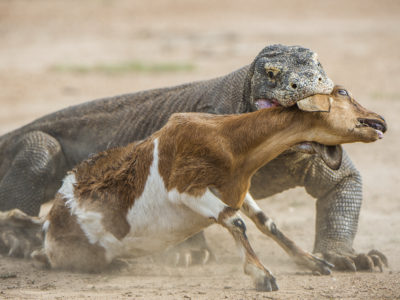
Komodo Dragon
Only found on five Indonesian islands

King Cobra
They are the longest venomous snake in the world.
Newest Animals that Start with the Letter K
The most recently added Animals that start with the letter K.

Kamehameha Butterfly
State insect of Hawaii

Kiang
The kiang, native to the Tibetan Plateau, is the largest of the wild asses!

Kingklip
A delicacy in South Africa
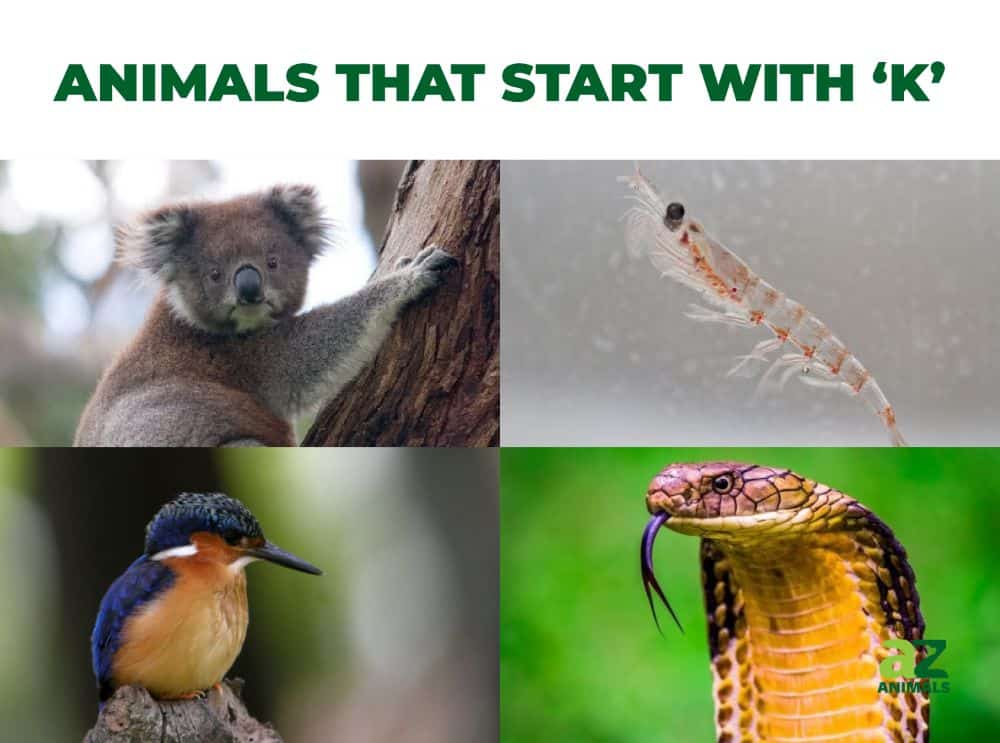
Animal by Letter Lists
- Animals that Start with A
- Animals that Start with B
- Animals that Start with C
- Animals that Start with D
- Animals that Start with E
- Animals that Start with F
- Animals that Start with G
- Animals that Start with H
- Animals that Start with I
- Animals that Start with J
- Animals that Start with K
- Animals that Start with L
- Animals that Start with M
- Animals that Start with N
- Animals that Start with O
- Animals that Start with P
- Animals that Start with Q
- Animals that Start with R
- Animals that Start with S
- Animals that Start with T
- Animals that Start with U
- Animals that Start with V
- Animals that Start with W
- Animals that Start with X
- Animals that Start with Y
- Animals that Start with Z
Thank you for reading! Have some feedback for us? Contact the AZ Animals editorial team.



